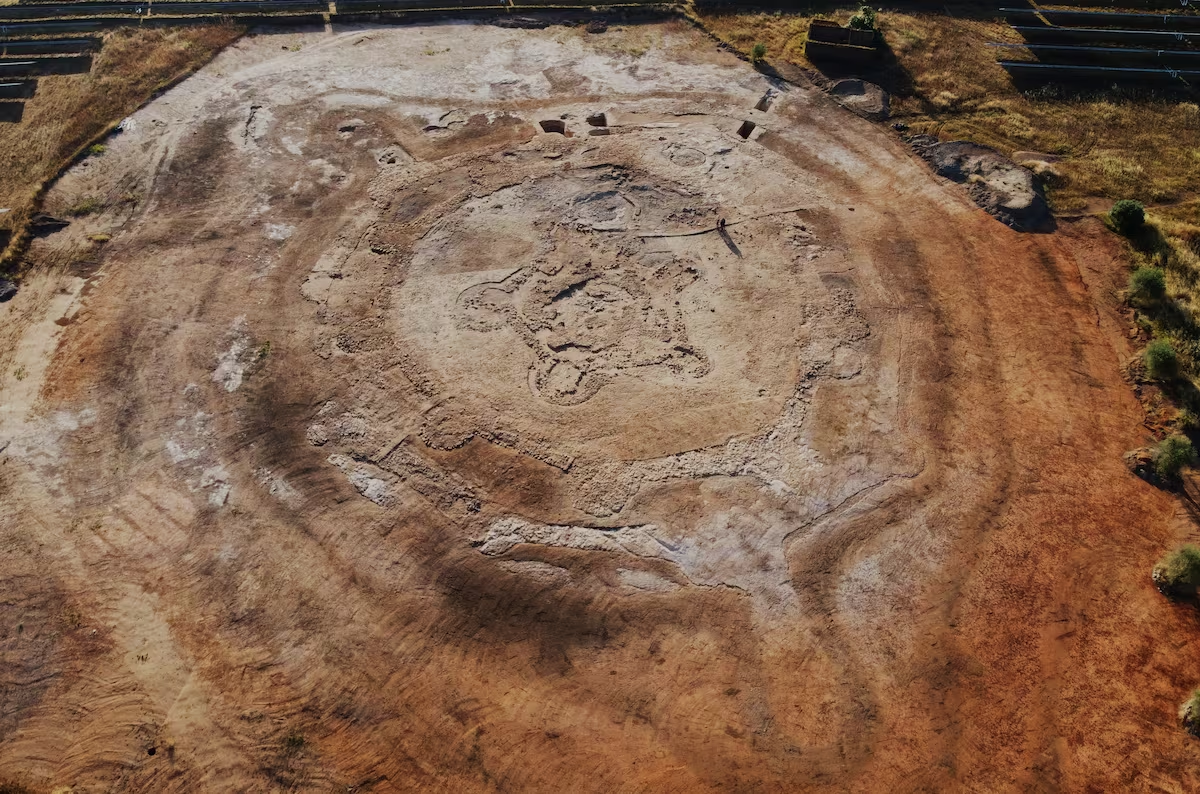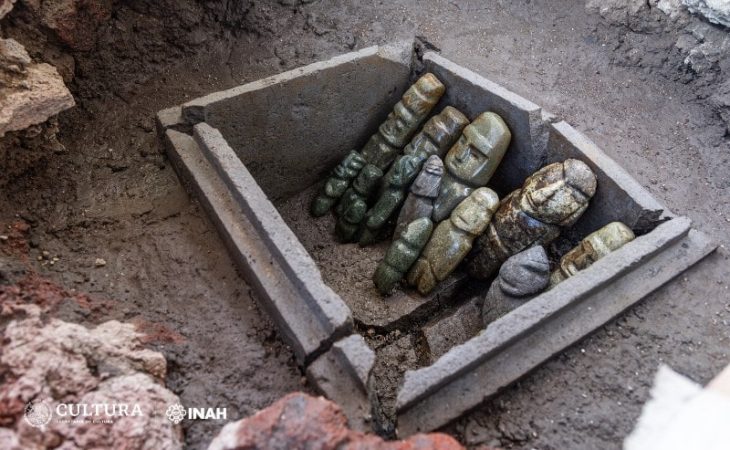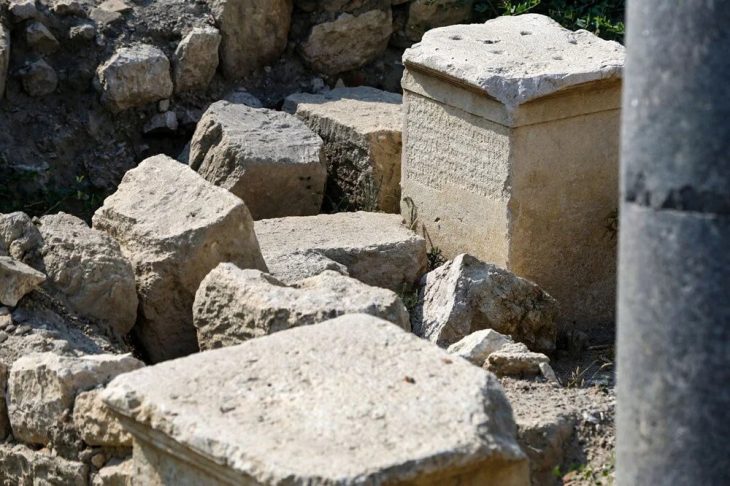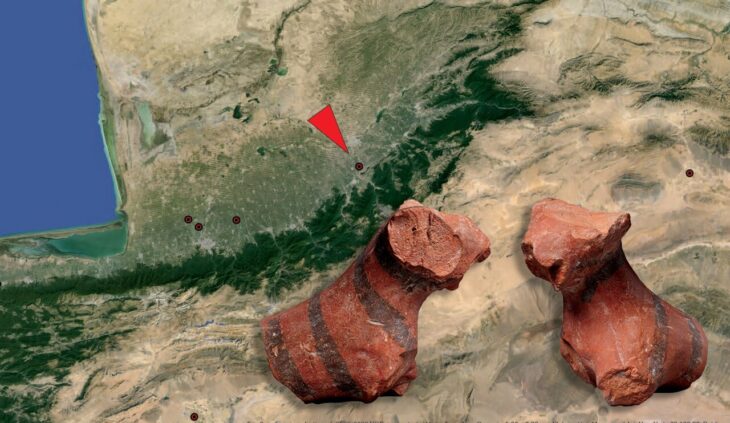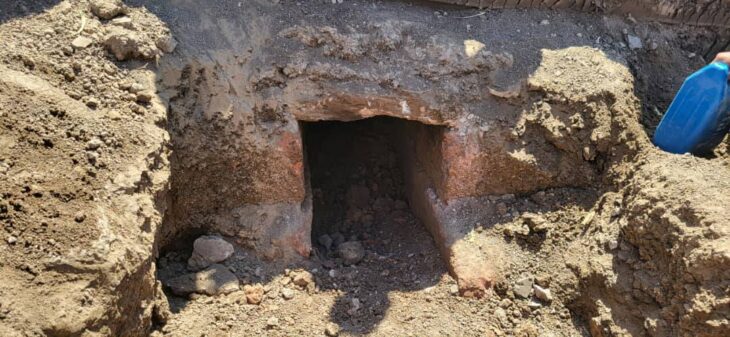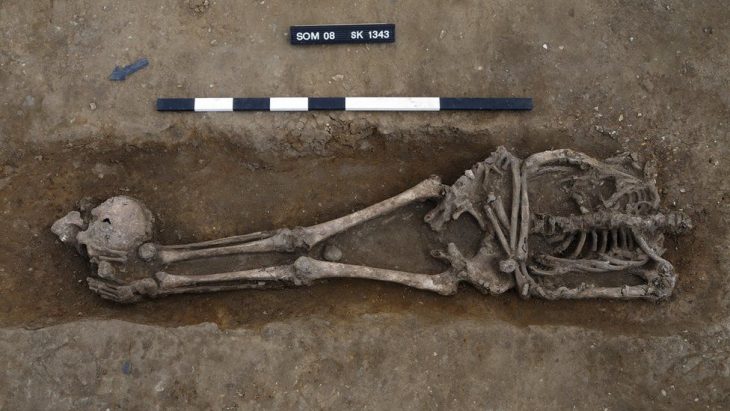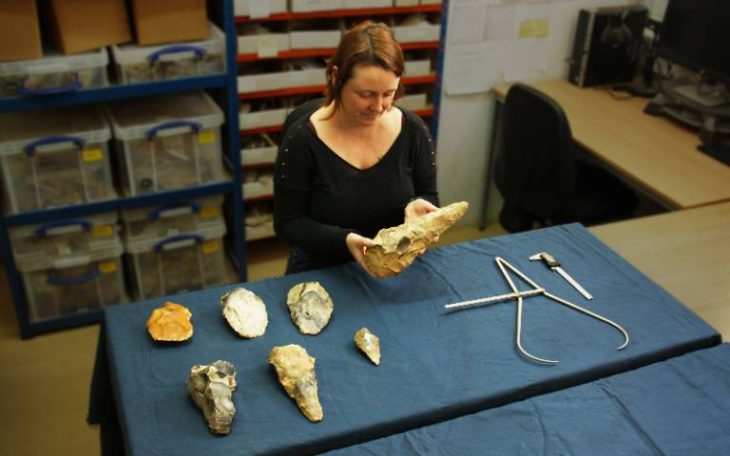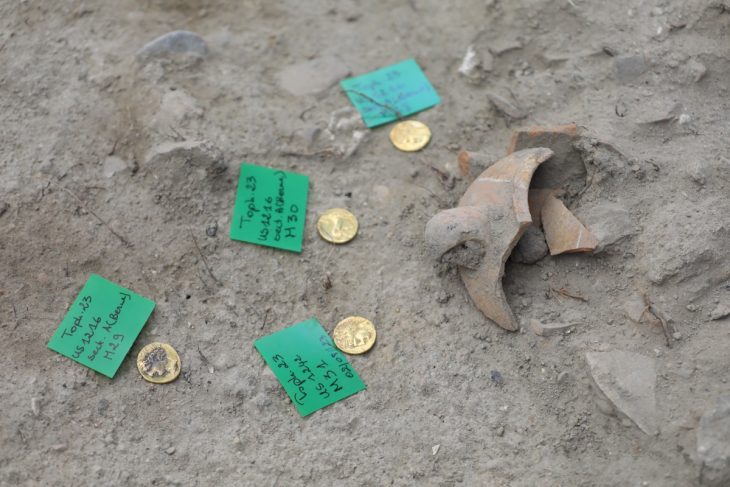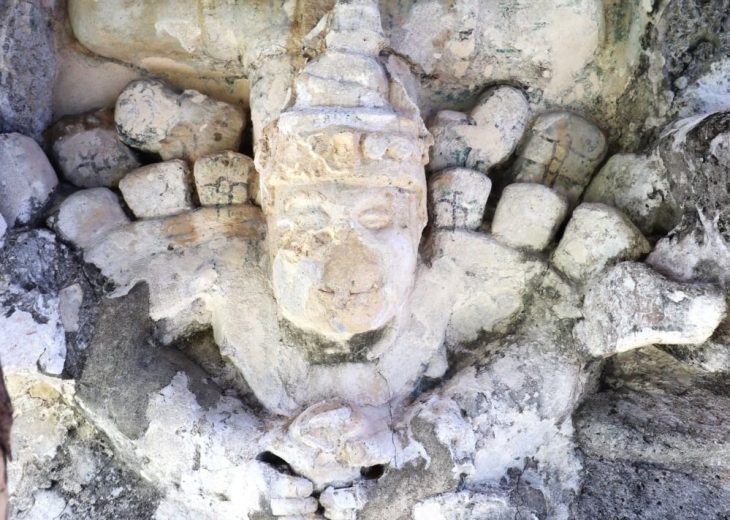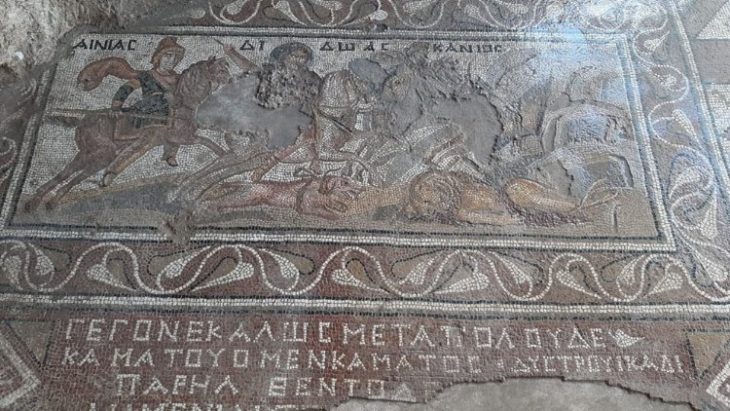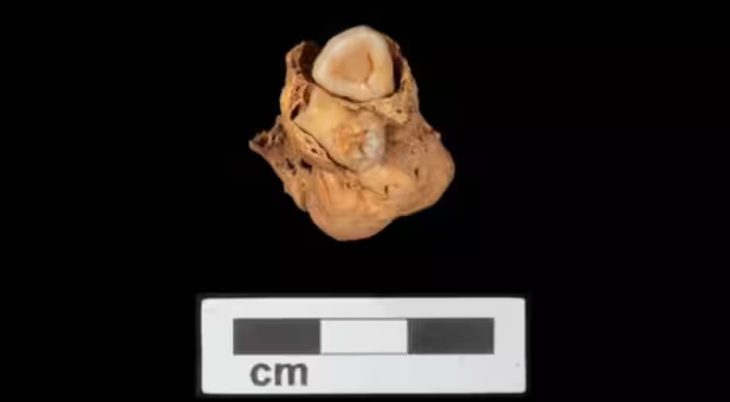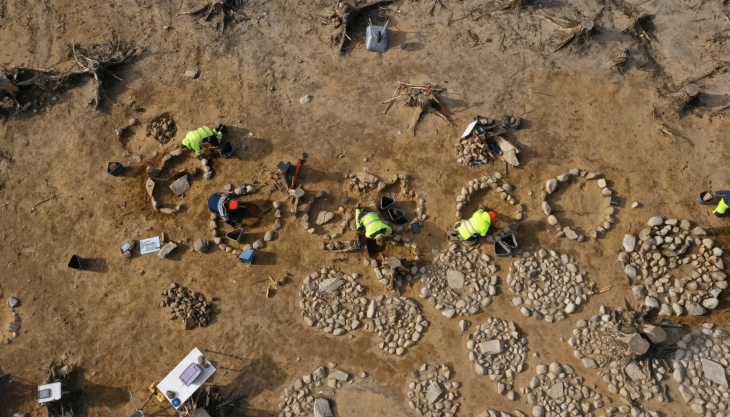A remarkable 4,900-year-old Copper Age fortress, featuring a pentagon shape, three concentric walls, 25 bastions, and three ditches, has been uncovered by researchers from Tera S.L. during the construction of a photovoltaic park on the Marquis de la Encomienda estate near Almendralejo in western Spain’s Extremadura region.
Spanning 13,000 square meters, the Copper Age fortress, featuring robust stone and adobe walls, was designed with a single entrance just 70 centimeters wide to make it virtually impregnable. However, despite its formidable defenses, the complex was ultimately destroyed, burned, and razed by enemies, leading to its abandonment 400 years after its construction.
Archaeologists have uncovered numerous artifacts within the site, including arrowheads, idols, axes, grinding stones, plates, bowls, loom components, and traces of a reservoir for water storage and cabins inside the structure.
In a statement to El País, archaeologist César Pérez remarked, “The complex system of walls and ditches, built from both stone and earth, demonstrates careful planning that required the coordination of a large group of people.”
César Pérez and his team determined that wooden doors set in the adobe walls of the Cortijo Lobato fortress were burned during an attack, leading to the destruction of the entire structure and its abandonment around 2450 B.C.
📣 Our WhatsApp channel is now LIVE! Stay up-to-date with the latest news and updates, just click here to follow us on WhatsApp and never miss a thing!!
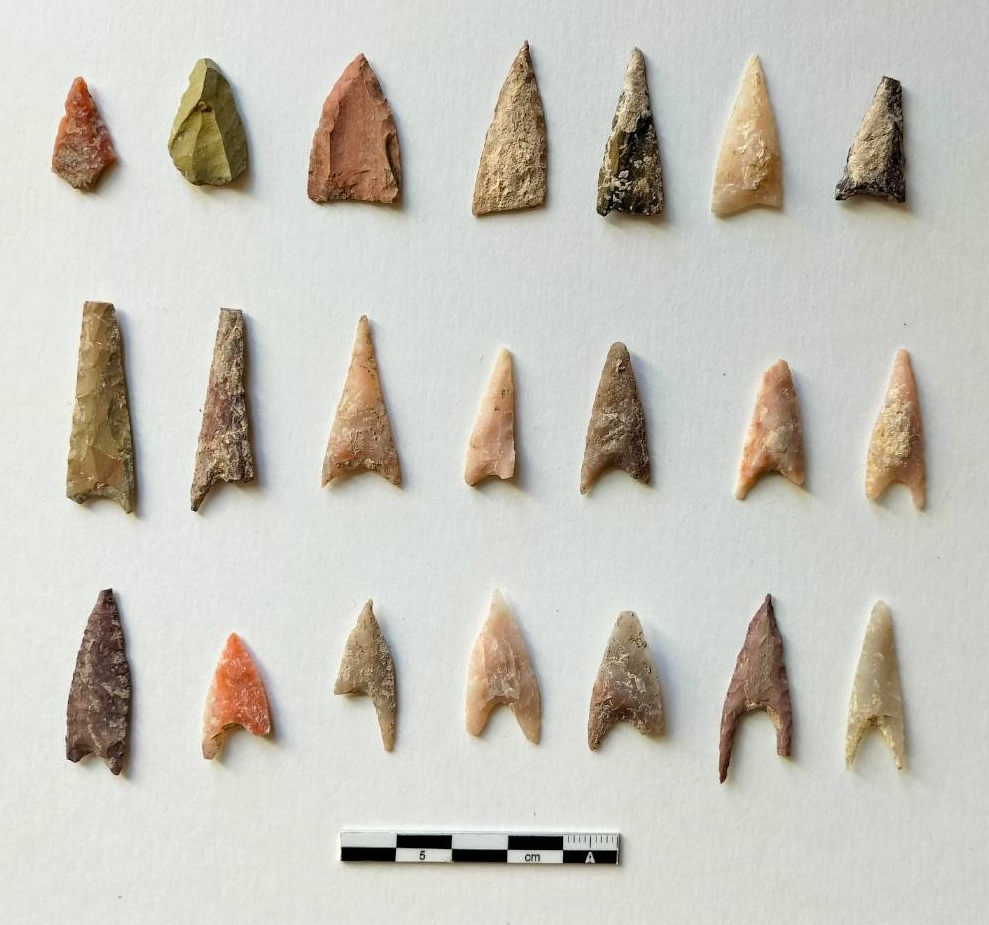
Archaeologists also found evidence of a fire that consumed the wooden doors, despite adobe being non-flammable and the doors not being near any other combustible materials, suggesting the fires may have been deliberately set during a violent assault. The presence of a large number of arrowheads found in the burn layer supports this theory. The fortress remained abandoned until the Roman Imperial period in the 2nd to 3rd centuries A.D.
The Chalcolithic fortress, strategically situated on a hilltop 1,030 feet above sea level, is notable for its complete 360-degree views of the surrounding landscape. Initially constructed with a pentagonal adobe wall measuring four to five feet in thickness, the fortress featured five bastions and a small entrance gate, which archaeologists have likened to the shape of crab claws. Subsequently, two additional concentric walls were added to enhance the original enclosure, further fortified by three defensive ditches and a total of 25 strategically placed bastions, optimizing firing angles and providing protected positions for defenders. The single entrance, measuring just 27.6 inches wide, creates a significant bottleneck for any potential attackers.
Enclosing over three acres, the fortress’s walls reveal remnants of huts and a water reservoir, suggesting the presence of an organized labor force coordinated by leaders. The complexity of the defensive structures underscores the likelihood of a well-planned and executed construction effort, reflecting the advanced societal organization of the time.
In the area of the old Cortijo Lobato — after which the archaeological site is named — researchers identified Chalcolithic-era materials concentrated in an olive grove. The site, named after the Cortijo Lobato, was ultimately abandoned around 2450 BC, as determined by carbon-14 dating of animal remains found among the ashes of the fire. The next trace of human presence does not appear until the Late Roman Empire (2nd–3rd centuries AD), following a silence of 2,700 years. In this later period, archaeologists uncovered an unusual grave near the second defensive ditch.
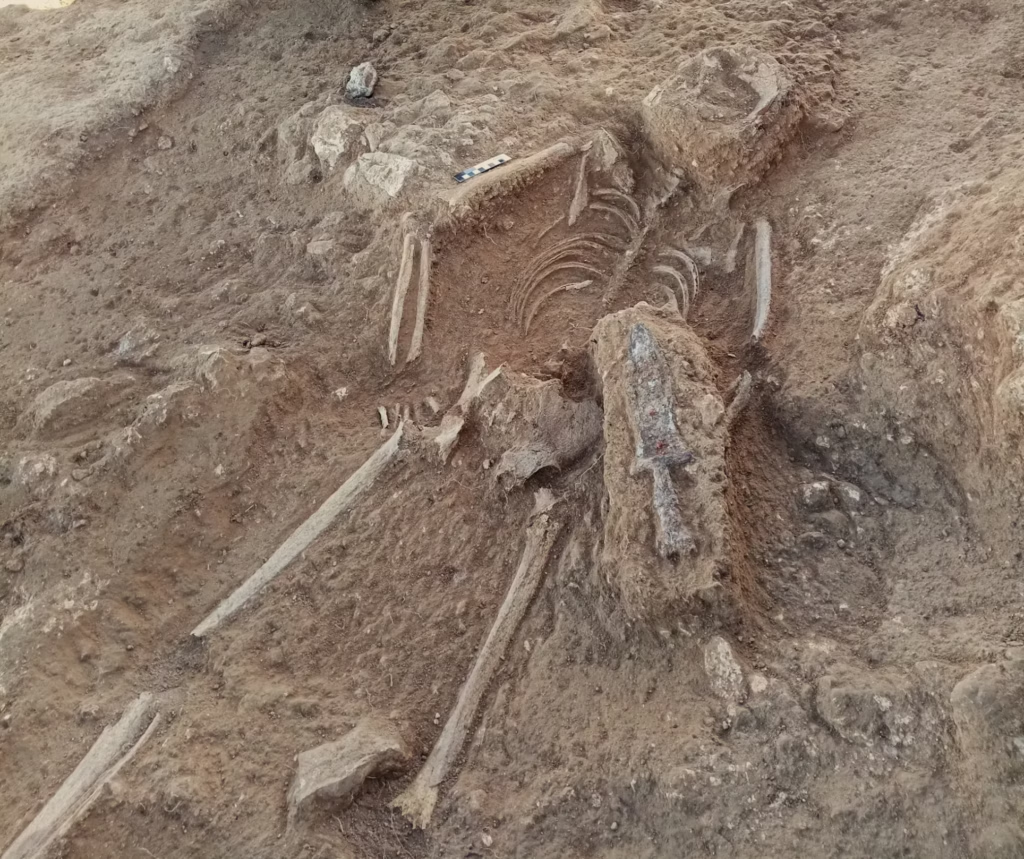
The burial was a solitary, shallow one, containing the remains of a man who was between 25 and 35 years old. He was laid face down with a pugio, which is a type of dagger, on his back. This suggests that he might have had a military role since the pugio was the standard dagger used by Roman legionaries. It looks like the burial was done in a hurry because the pit was barely deep enough to fit the body. The skeleton was almost complete, except for the feet, which seemed to have been cut off. Interestingly, the dagger was found in amazing condition—fully intact and still in its sheath.
The Roman pugio, which dates back to the late 1st century BC, was inspired by earlier daggers used in pre-Roman Hispania, with similar weapons wielded by the Celtiberians since the late 4th century BC. The Autrigones, Vettones, Vacceos, and Berones preferred a curved-edged dagger from the late 3rd century BC. Roman legionaries first encountered these weapons during intense battles against these groups in the 2nd century BC, where they became prized war trophies. Over time, the pugio was modified and adopted as standard equipment for legionaries throughout the empire.
Initially, archaeologists debated whether the skeletal remains belonged to a soldier or a civilian who had acquired the dagger. However, the deliberate placement of the pugio in the burial suggests he was a soldier given a dishonorable burial, a rare practice for the time, hinting at an untold story. If confirmed as a soldier, he would have belonged to Legio VII Gemina, the only Roman legion stationed in Hispania at that time, primarily responsible for escort duties and provincial security.
The pugio has undergone laboratory treatment for analysis and preservation under the guidance of restoration specialist Maicu Ortega from Madrid Complutense University, and researchers are also attempting to extract DNA from one of the individual’s teeth. The cause of death, the unusual face-down burial with severed feet, and the placement of the pugio on his back remain a mystery, as described by the archaeologists.
Cover Image Credit: Aerial view of the Copper Age fortification located in Almendralejo. Credit: Tera S.L.

